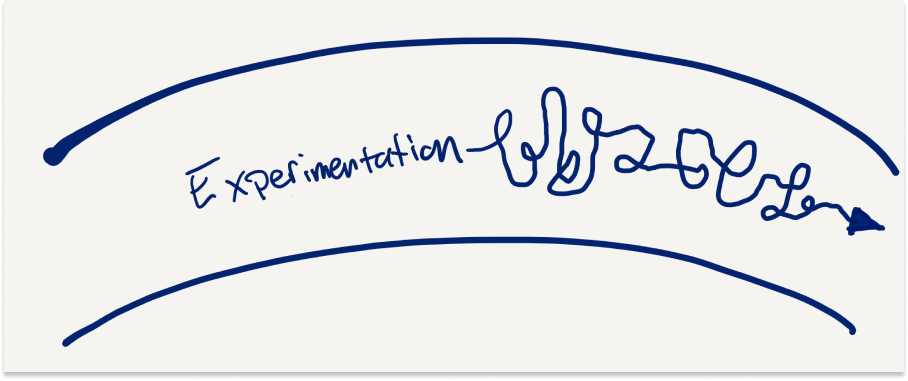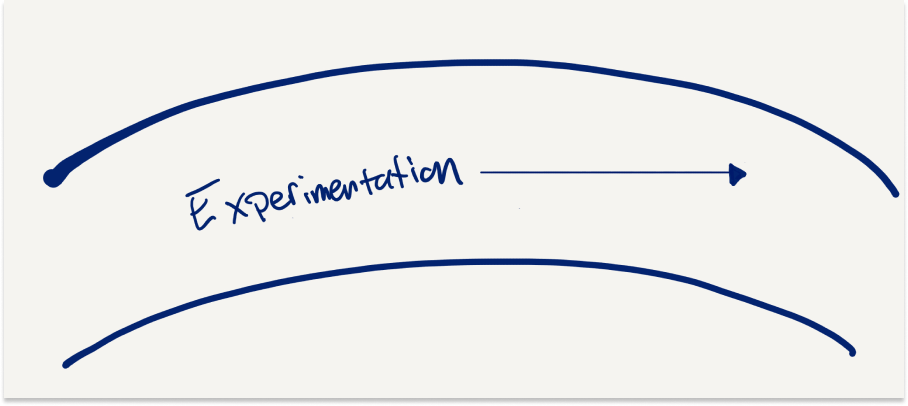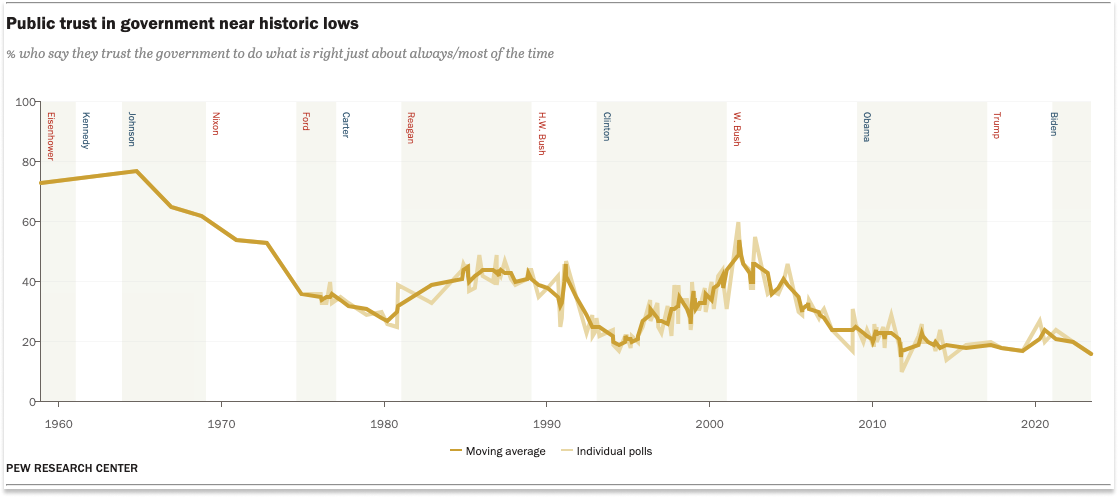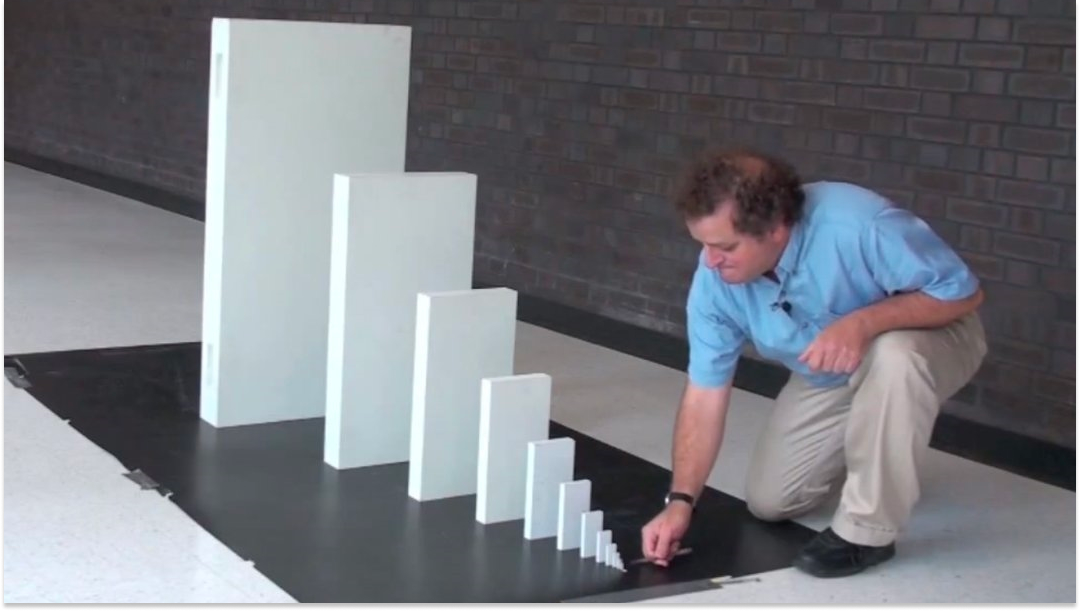Not Boring by Packy McCormick - The Experimentation Layer
Adios to the 134 Not Boring people who left us since last week (lotta New Year inbox cleaning!). If you haven’t subscribed, join 218,707 smart, curious folks by subscribing here: Today’s Not Boring is brought to you by… Plaid You may know Plaid as the company that lets you safely and quickly connect your bank to your favorite finance apps. When their original product dropped back in 2013, it was like magic and unleashed a whole wave of fintech innovation – think Venmo, Chime, and SoFi. Ten years later, Plaid has established itself as one of the leading digital finance platforms and has rolled out a whole suite of products that allow businesses to get the most out of their financial data - including payments, identity verification, and credit. Now, Plaid just dropped its 2023 Fintech Effect report – a 2,000 person survey on everything important happening in fintech. The report combines the survey’s results and Plaid’s unique vantage point in the industry to produce a comprehensive overview over everything you need to to know about building in fintech in 2023. The best part? It’s completely free. If you’re a founder, builder, investor, or just curious about the future of money – then do yourself a favor and spend a few moments diving deep into the 2023 Fintech Effect. Hi friends 👋, Last week, I wrote about Stewart Brand’s Pace Layers. I said I’d probably be using them as a framework going forward, and that I’d call out which layer I was writing about when I did. We didn’t have to wait long. This week, I’m writing about the beautiful messiness at my favorite layer: the fashion layer. Let’s get to it. The Experimentation LayerLast week, Rabbit dropped its $199 AI device, the r1. It sold out 40,000 devices across four pre-order batches, good for $8 million in booked revenue, tout de suite. It also launched a thousand tweets arguing that “it should have been an app,” that it would never work at $199, that it didn’t have a real use case, and that it was a solution in search of a problem. Look, I don’t know the Rabbit founders, they don’t need me to defend them, and they’re laughing all the way to the bank as we speak. But some of the reactions to the product are the latest in a long line of commentary I’ve noticed that amounts to: “Why didn’t they simply do the perfect thing on the first attempt?” The short answer is: that’s not how this works. Things are not linear or clean. We can only asymptote towards perfection through trial and error. Even Steve Jobs, the Steve Jobs, launched the ROKR E1 in partnership with Motorola before the iPhone, as Michael Mofina pointed out to me. I had memory holed it. It was a total bust.  You don’t have to watch that whole video, but if you want a little hit of cringe, start at 10:50, where Steve lets the COO of Cingular Wireless come onstage to do a corporate standup comedy routine. No one gets this stuff right every time, not even ~*Steve*~. The longer answer, which we’ll explore today, is that the beauty of the system lies in millions of people trying new things, most of which will fail outright, some of which will succeed spectacularly, and many of which will survive only in pieces, contributing a new mechanism, concept, or feature to the pile of Lego bricks that the next group of tinkerers can play with. This is true for products, research, and ideas, even the ones you disagree with. Especially the ones you disagree with. The point isn’t to play it safe and get it right the first time; if any one person or group of people had The Answers, we might as well give real communism a try. The point is to experiment with wild, clever, creative, novel things, get feedback from the market, and iterate until, maybe, something emerges that improves society in a fundamental way. Let’s turn to the Pace Layers. The Experimentation LayerI like to think of the top layer of Stewart Brand’s Pace Layers, the fashion layer, as the Experimentation Layer. This is my favorite layer, the fuel that keeps the engine of progress humming, the raw material from which society is sculpted. It’s where new things and ideas come to play, airlocked from hurting the deeper levels, free to compete for the right to change them for the better. As Brand writes (modified with our new name):
Most of the things that get tried out at the experimentation layer don’t make it through. Clothes go out of style, ideas crumble in the face of scrutiny, radical campaigns lose, and there’s that at-least-directionally-correct stat that 90% of startups fail. That’s OK. That’s great! Variance is the point. Launch a million mutations and see which increases society’s fitness. If something seems too unpolished, ambitious, weird, or even dangerous, good! It’s in the right place. Capitalism’s main advantage over other economic systems is that the experimentation layer exists within capitalism, and does not exist within other economic systems. Democracy’s main advantage over other governance systems is that the experimentation layer exists within democracy, and does not exist within other governance systems. Stalin skipped this layer and went straight for commerce or infrastructure or culture. Empirically, that didn’t work. A society needs a lot of wild, crazy new ideas to fight off stagnation, to grow and evolve, even if each particular wild, crazy new idea seems jarring, scary, incomplete, or impractical. For better or worse, the froth is what produces the occasional good idea or practice that sifts down to improve deeper levels. There doesn’t seem to be a reliable shortcut, as nice as it would be if there were. There are a couple of ways a new idea can sift down to improve the deeper levels: in full or in part. We can look at startups as an example. Two Paths to the Deeper LayersThe first path is to make it through fully-formed; altered a little, sure, but intact in the form of a company that survives the early stages of startup life to become part of the fabric of commerce, something a lot of people pay for and use every day. This is the path to riches and glory. Zuckerberg walked this path. Musk walked this path. Bezos walked this path. It takes a lot: new ideas, fortitude, timing, adaptability, drive, and all of the other attributes attributed to successful entrepreneurs. The second path is to create an idea, mechanism, feature, or whatever that is so novel and unique that it survives and eventually sifts down on the back of another product, even if the company that created it fails. This is the less appreciated and often derided path, the path to on-paper failure but potentially lasting legacy, like passing on good genes to your kids and watching them succeed in ways you couldn’t. But this group contributes as much to the world’s progress as the former. It should be celebrated for its sacrifices, and potentially even rewarded posthumously. There should be Retroactive Public Goods Funding for those founders crazy enough to try something truly new that failed as a business but succeeded in creating useful mutations, maybe even ticker tape parades, and certainly not derision. Venture capital actually does a pretty great job here (the beauty of the model is a subject for a future piece, but we need do more to create the conditions for even more wild experiments — from the garage to the lab — because they create the ingredients for progress. Without those on-paper failures, future on-paper successes would be less likely. The only real failure is failing without adding anything new to the stew. Experimentation EverywhereI’m using startups as an example here, but this is true for anything – new ideas, new research, new political ideologies. And it operates at different scales. For instance, some nations are experimenting with radical new economic models like stringent degrowth policies or near anarcho-capitalism. If you live in Germany or Argentina, you might not love that your leaders are running opposite experiments on your country, but from a global perspective, it’s truly fascinating to get to test degrowth and anarcho-capitalism in production. Whatever the specific situation, people want new things to look like this: But that is the least valuable kind of new thing there is! That’s launching yet another ChatGPT wrapper as an app, doing research that’s likely to get funded, running a safe campaign by saying what the voters want to hear. It might even work in the short-term, but it doesn’t move the needle. The lower layers – commerce, infrastructure, governance, culture, and nature – are for slow and steady. They’re the backstop. The experimentation layer is for froth and novelty and things that are likely to fail but might, just might, echo down into the deeper layers. I’ve written about society’s relatively recent risk aversion a bunch, and the more I think about it, the more I think that a big part of the issue is trying to smooth the experimentation layer into a straight line. This can show up as silly things, like telling hardware developers that they should have built an app instead. It can show up as a scientific research system that funds safe, incremental work instead of crazy new ideas – 81% of Fast Grants recipients who responded to a survey said that their research programs would become more ambitious if they could choose how to spend their funding. It shows up in the ideas that people aren’t allowed to discuss without getting canceled. The effect is that of an overactive immune system that starts attacking its own cells. So when people try something new, or introduce a radical idea, the experience looks something like this: That’s part of the process, too, of course. For something to escape the experimentation layer and influence the deeper, slower layers, it needs to survive the gauntlet. Trust the LayersI wonder if, given the declining trust in institutions further down the stack, people feel the need to police new things at the experimentation layer, just as a basketball team without a dominant rim protector might play a safer, less aggressive defense on the perimeter. “What happens,” they seem to ask, “if we let a bad idea slip through?” The more important, and harder to predict, question is, “What happens if we choke the good ideas out before they have a chance to sift down?” There’s good news though: the experimentation layer seems to be getting unshackled. In my conversations and adventures on the internet, I’ve noticed the tide turning. Maybe you’ve felt the vibe shift, too. From the ashes of institutional trust a phoenix of trust in people to make up their own minds is rising. Throwing everyone together, online, 24/7, and giving them information and access to each other directly, unfiltered, was bound to have a jarring impact. It’s become clear that no one – not politicians, not the smartest person you know – has all The Answers, and we’re learning how to live in a world where that’s evident. Instead of trust in any one person or group of people’s opinions at the experimentation layer, we can trust that the deeper layers will provide a backstop, and free the experimentation layer up for maximal variance. A few examples: Controversial ideas aren’t as likely to get you canceled anymore. The Overton Window seems to be expanding. Just this weekend, Moment of Zen interviewed Curtis Yarvin. I don’t know Yarvin’s ideas well enough to say which I agree with and disagree with, but airing them out and letting people decide which to incorporate and which to dismiss for themselves feels like a healthy step. It’s been said before, but X under Elon has played a role here, and I think it’s a positive development. Crypto is coming back, using the building blocks from the last cycle to create something about which Larry Fink, the head of world’s largest asset manager, BlackRock, said: “We believe the next step going forward will be the tokenization of financial assets.” People want the tokenization of financial assets, proof of personhood, and stablecoins without monkey jpegs, memecoins, and friend.tech, but I guess the point I’m trying to make is that you don’t get the tokenization of financial assets, proof of personhood, and stablecoins without monkey jpegs, memecoins, and friend.tech. This meme only ever makes sense with the benefit of hindsight: These are just a few examples, but there are many. You can probably name a bunch. And then there’s Rabbit. The market quickly drowned out Rabbit’s naysayers; now it will be up to Rabbit to make it through the experimentation layer or die trying. Maybe Rabbit makes it through fully formed, iterating across new versions to eventually topple Apple. Maybe it fizzles. Maybe a big company or young entrepreneur riffs on one or two of its features and adds their own twist to create the next big thing. I don’t know how it will turn out. No one knows how it will turn out. You really do need to fuck around to find out. Here’s to the crazy ones. Thanks to Dan for editing! That’s all for today. We’ll be back in your inbox with a Weekly Dose on Friday. Thanks for reading, Packy |
Older messages
Weekly Dose of Optimism #76
Friday, January 12, 2024
Figure, Rabbit, Emissions Decline, Blood-Brain Barrier, RetroPFG
Pace Yourself
Friday, January 12, 2024
Kicking the Year Off with Pace Layering
Weekly Dose of Optimism #75
Friday, January 5, 2024
ALOHA, LNG, Weight-Loss Capsules, Meissner Effect?, AVC Predictions, Choose Optimism.
Weekly Dose of Optimism #74
Friday, December 22, 2023
Solar Surge, Nuclear Hermes, Self-Driving Labs, CAR-T, Retro Biosciences, AOM Season 1 Finale
Momentum, Consolidation, and Breakout
Tuesday, December 19, 2023
Lessons from 2023, the year the momentum stalled
You Might Also Like
🔮 $320B investments by Meta, Amazon, & Google!
Friday, February 14, 2025
🧠 AI is exploding already!
✍🏼 Why founders are using Playbookz
Friday, February 14, 2025
Busy founders are using Playbookz build ultra profitable personal brands
Is AI going to help or hurt your SEO?
Friday, February 14, 2025
Everyone is talking about how AI is changing SEO, but what you should be asking is how you can change your SEO game with AI. Join me and my team on Tuesday, February 18, for a live webinar where we
Our marketing playbook revealed
Friday, February 14, 2025
Today's Guide to the Marketing Jungle from Social Media Examiner... Presented by social-media-marketing-world-logo It's National Cribbage Day, Reader... Don't get skunked! In today's
Connect one-on-one with programmatic marketing leaders
Friday, February 14, 2025
Enhanced networking at Digiday events
Outsmart Your SaaS Competitors with These SEO Strategies 🚀
Friday, February 14, 2025
SEO Tip #76
Temu and Shein's Dominance Is Over [Roundup]
Friday, February 14, 2025
Hey Reader, Is the removal of the de minimis threshold a win for e-commerce sellers? With Chinese marketplaces like Shein and Temu taking advantage of this threshold, does the removal mean consumers
"Agencies are dying."
Friday, February 14, 2025
What this means for your agency and how to navigate the shift ͏ ͏ ͏ ͏ ͏ ͏ ͏ ͏ ͏ ͏ ͏ ͏ ͏ ͏ ͏ ͏ ͏ ͏ ͏ ͏ ͏ ͏ ͏ ͏ ͏ ͏ ͏ ͏ ͏ ͏ ͏ ͏ ͏ ͏ ͏ ͏ ͏ ͏ ͏ ͏ ͏ ͏ ͏ ͏ ͏ ͏
Is GEO replacing SEO?
Friday, February 14, 2025
Generative Engine Optimization (GEO) is here, and Search Engine Optimization (SEO) is under threat. But what is GEO? What does it involve? And what is in store for businesses that rely on SEO to drive
🌁#87: Why DeepResearch Should Be Your New Hire
Friday, February 14, 2025
– this new agent from OpenAI is mind blowing and – I can't believe I say that – worth $200/month










